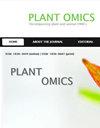Transcriptome analysis of oil palm (Elaeis guineensis Jacq.) roots under waterlogging stress
Q3 Agricultural and Biological Sciences
引用次数: 4
Abstract
Waterlogging seriously constrains growth and yields in oil palm. To date, the responsive molecular changes caused by waterlogging in oil palm remain elusive. To elucidate the molecular genetic mechanisms of waterlogging stress, two varieties of oil palm Deli x Lamé and Deli x Ghana were used. The transcriptome profiles of the roots under waterlogging stress and normal conditions were compared via Ion Torrent Sequencing. Four libraries (GNR, GSR, SNR, and SSR) of oil palm roots after 45 days of normal watering and waterlogging stress were constructed. Approximately 6.2 million sequenced reads per library were obtained, with 5.5 million mapped reads (88.64%) similar to the oil palm genome in the GenBank database. A comparison of GNR/GSR showed a high of 3,289 DEGs with most genes up-regulated (1,863 DEGs). The GO analysis revealed the distribution of the DEGs among various pathways, suggesting a wide spectrum of physiological processes impacted by waterlogging stress. Moreover, qRT-PCR showed strong expression of all selected RNA-seq genes in waterlogged Deli x Ghana (GSR), especially GST, SAPK10 and NAC29 that are reported for the time to respond to waterlogging stress. Thus, this study not only reveals the comprehensive mechanisms of waterlogging responsive transcription in oil palm, but also establishes Deli x Ghana as a highly-adaptable variety to waterlogging conditions.油棕根在淹水胁迫下的转录组分析
水涝严重制约了油棕的生长和产量。到目前为止,油棕内涝引起的响应性分子变化仍然难以捉摸。为了阐明内涝胁迫的分子遗传机制,采用了两个油棕品种Deli x Lamé和Deli x Ghana。通过离子洪流测序比较了淹水胁迫和正常条件下根系的转录组图谱。构建了正常浇水和淹水胁迫45天后油棕根的四个文库(GNR、GSR、SNR和SSR)。每个文库获得了大约620万个测序读数,其中550万个映射读数(88.64%)与GenBank数据库中的油棕榈基因组相似。GNR/GSR的比较显示高达3289个DEG,大多数基因上调(1863个DEG)。GO分析揭示了DEG在各种途径中的分布,表明受淹水胁迫影响的生理过程非常广泛。此外,qRT-PCR显示,在淹水的Deli x Ghana(GSR)中,所有选定的RNA-seq基因都有强表达,特别是GST、SAPK10和NAC29,它们当时被报道对淹水胁迫有反应。因此,本研究不仅揭示了油棕内涝反应转录的综合机制,而且确定了Deli x Ghana是一个高度适应内涝条件的品种。
本文章由计算机程序翻译,如有差异,请以英文原文为准。
求助全文
约1分钟内获得全文
求助全文
来源期刊

Plant Omics
生物-植物科学
CiteScore
1.30
自引率
0.00%
发文量
0
审稿时长
6 months
期刊介绍:
Plant OMICS is an international, peer-reviewed publication that gathers and disseminates fundamental and applied knowledge in almost all area of molecular plant and animal biology, particularly OMICS-es including:
Coverage extends to the most corners of plant and animal biology, including molecular biology, genetics, functional and non-functional molecular breeding and physiology, developmental biology, and new technologies such as vaccines. This journal also covers the combination of many areas of molecular plant and animal biology. Plant Omics is also exteremely interested in molecular aspects of stress biology in plants and animals, including molecular physiology.
 求助内容:
求助内容: 应助结果提醒方式:
应助结果提醒方式:


